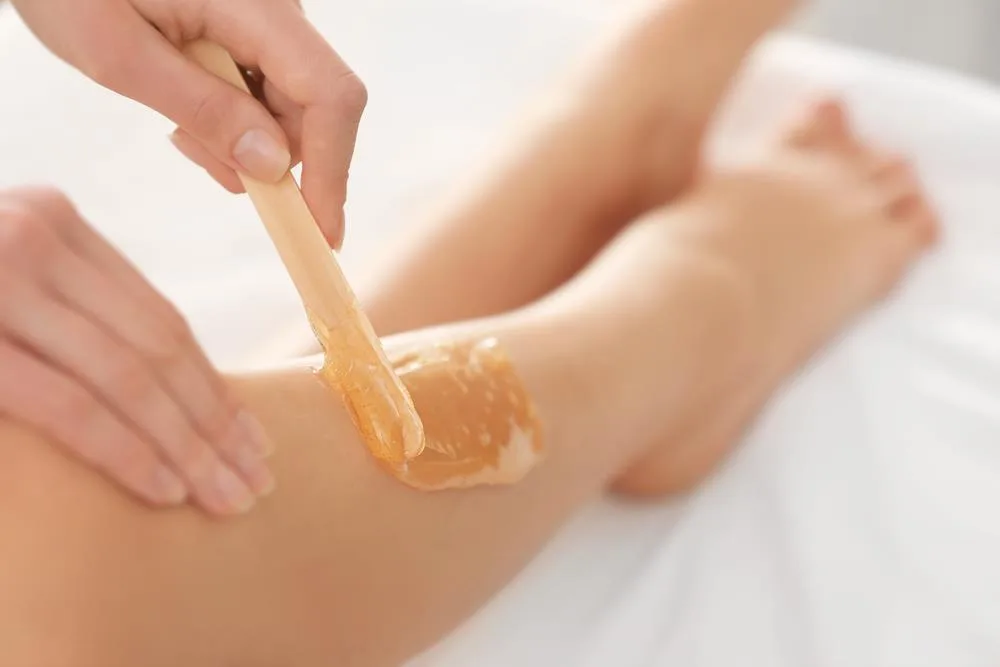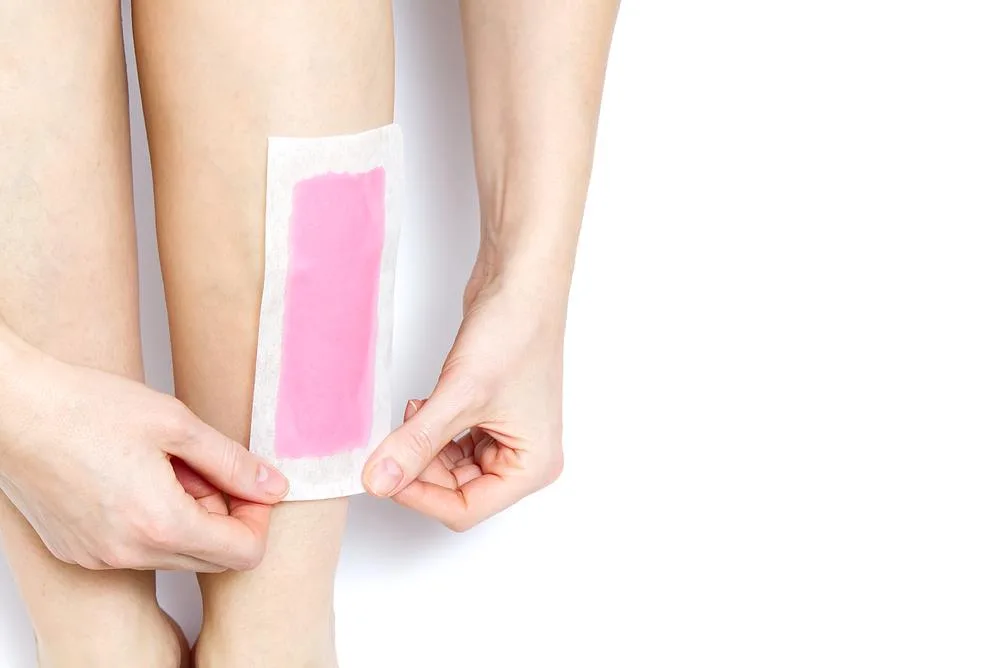So you’ve decided to give home waxing a go – but how do you navigate the wide range of home waxing options available? A good first step is to decide whether you’d like to use hot or cold wax. Read on to understand the difference between the techniques and which might be best for you.
- What’s the difference between hot wax and cold wax?
- Which is the best wax for me?
- Tips for best waxing results
What’s the difference between hot wax and warm wax, and cold wax?
Hot waxing involves the wax being heated in a warmer, microwave or boiling water until it’s just melted, after which it is applied to the skin with a spatula. The wax hardens around the hair shaft as it dries, so when the wax is pulled away, the hair comes off with it. Technically, there’s actually two types of waxing using heated wax:
- Warm waxing uses wax that has a lower melting temperature and is quite runny. It needs to be removed using a cloth or paper strip, which is pressed over the wax after it’s been applied to the skin. The wax mainly acts like a glue, firmly sticking the hair to the strip.
- Hot waxing uses a wax with a higher melting temperature. It is applied more thickly to the skin and doesn’t require wax removal strips. Instead, the hairs get tightly embedded in the wax as it cools and contracts. Once it sets, the wax can then be directly removed in one piece.

Cold waxing works most similarly to warm waxing, except the wax just comes pre-measured on prepared strips. There is no heat source required; usually all that’s needed is to rub the strip several times as you apply it to your skin, to make sure the wax adheres well to the hair.

Which is the best wax for me?
Luckily, products for hot, warm and cold waxing at home are readily available in Australia. Below is a summary to help compare all the techniques, plus some recommended products from Veet’s range:
| Hot Wax Benefits | Disadvantages |
|
|
Try: Veet Spawax Starter Kit
Easily warmed in the microwave, this wax is dermatologically tested and comes with an incredible Precision Spatula that not only tells you when the wax is at the right temperature (wait for the blue rectangle to appear!), but also has different sections specifically adapted to your different body parts, including the legs, underarms and bikini line. Plus, the formula is water rinsable, so it’s really easy to wash off any wax residues when you’re done.
| Warm Wax Benefits | Warm Wax Disadvantages |
|
|
Try: Veet Warm Wax
Easily warmed in the microwave, this wax is dermatologically tested and comes with an incredible Precision Spatula that not only tells you when the wax is at the right temperature (wait for the blue rectangle to appear!), but also has different sections specifically adapted to your different body parts, including the legs, underarms and bikini line. Plus, the formula is water rinsable, so it’s really easy to wash off any wax residues when you’re done.
| Advantages of Using Strip Wax | Cold Wax Disadvantages |
|
|
Try: Veet Easy-Gel Wax Strips
Veet’s range of cold wax strips are able to remove hair from as short as 1.5mm and are a great option when you need a quick and easy hair-removal fix, or are trying at-home waxing for the first time. They’re all suitable for sensitive skin and there are also specially designed products for your bikini line and underarms, so you can be sure your needs are covered.
Tips for best waxing results
No matter which method or product you choose, following these tips will help you get the most out of your wax:
- If you’re still fairly new to waxing, get experienced waxing your legs first before trying to do your underarms, bikini line or face – your legs are easier to do and less sensitive than other areas.
- Always pull the strip or wax against the direction of hair growth, keeping it close to the skin as you pull and maintaining the same angle all the way – do not pull upwards at the end, or it will be really painful!
- It’s best to pull the strip off as fast as you can.
- Don’t wax over the same area more than once.
- It’s normal for your skin to turn red after waxing, so you may want to allow some time for any redness to die down if you’re waxing for a special occasion.
Whether using hot wax, warm wax or cold wax, Veet can help make at-home waxing easy. Find out more about hair removal at home here, including expert preparation and aftercare tips.
RB-M-12161